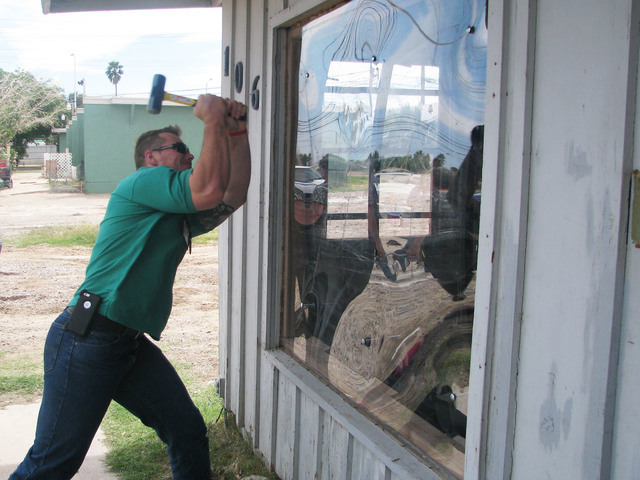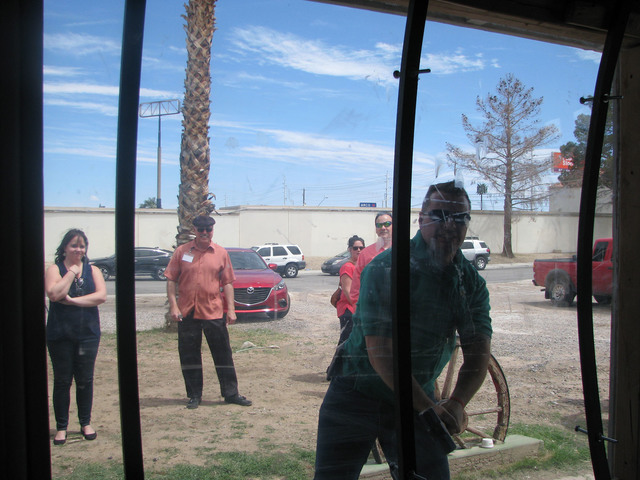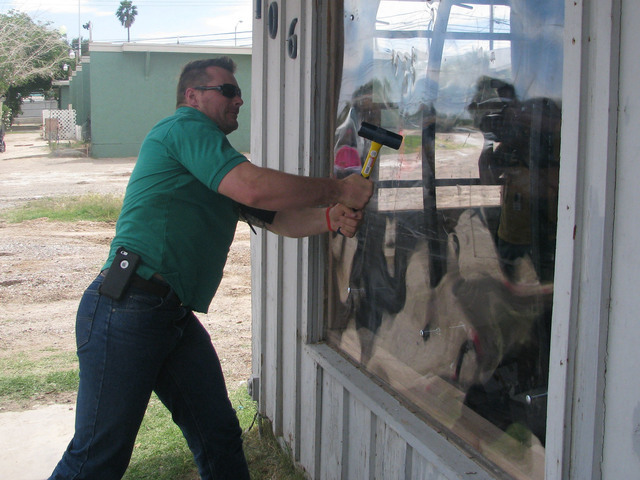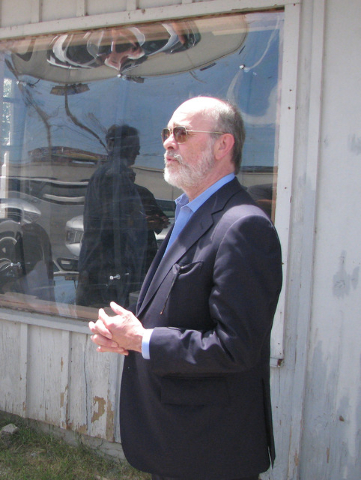Las Vegas to trade plywood for unbreakable window coverings to secure vacant properties
They say that people in glass houses shouldn’t throw stones, but in the case of the treatment the city of Las Vegas is trying out to curb squatting, it seems a thrown stone is more likely to bounce back than to break anything.
A group of Las Vegas firefighters, Metropolitan Police Department officers, code enforcement officers, media members and others were on hand May 4 to see a demonstration of SecureView Windows on a home that has been vacant for more than 10 years at 106 Shiloah Drive. The product is a transparent polycarbonate sheet that Safeguard Properties have been using for two years instead of plywood to secure abandoned and foreclosed properties.
“One of the unfortunate results of the downturn of the economy is that we end up with about 100 homes a year that become vacant and can be a problem,” said Tom Perrigo, planning director for the city of Las Vegas.
Plywood is typically secured with screws or nails from the outside of the building, which can be pried up or unscrewed by a determined squatter. The plywood also makes the interior of the property invisible to the outside world. Once squatters get in, there can be little indication of their presence, and illegal activity and a lot of damage can be done, up to and including total destruction by fires caused by open flames for cooking or heating.
“With (SecureView or a similar product), from the street, it’s hard to tell it’s vacant,” said Robert Klein, founder and chairman of Safeguard Properties and SecureView Windows. “The police can see inside, so they know if someone’s in there.”
The clear material also allows first responders to see inside to ascertain the threat to life and property presented by a fire or other issue. It is secured with wooden braces from the inside. They are simple to remove with common tools from the inside but difficult to breach from the outside. The wooden braces can also be easily broken out in seconds from inside if firefighters need to ventilate a building.
To demonstrate the durability of the windows, John Egan with the city of Las Vegas Code Enforcement attempted to break it with a sledgehammer. Egan’s physique has earned him the nickname “Thor” at the office, and more than a dozen strong blows failed to do anything but slightly scuff the surface and make the onlookers flinch and cover their ears.
Because it can be easily removed and stored, Klein said many homeowners in hurricane-prone parts of the country have begun using it instead of plywood to protect their homes during storms. The material costs $115 for a 4-by-8-foot sheet, which is more expensive than plywood, but Klein and city officials feel the cost will more than be made up in reuse and lack of loss from plywood being torn off structures.
“Since you can see inside, but it isn’t easy to get inside, homes with this product are less likely to become attractive nuisances,” Perrigo added.
City officials plan to evaluate the product for an as-yet-undetermined time in structures and areas that have been prone to break-ins and other problems in the past. It is possible that it will become the standard material for securing abandoned homes in the valley.
“There are other products on the market that do the same thing,” Klein said. “I’m not here so much to sell a product as to sell an idea. Let’s stop using plywood. Plywood is a cancer. The moment you put plywood on a property, the homes around it are devalued 29 percent.”
To reach East Valley View reporter F. Andrew Taylor, email ataylor@viewnews.com or call 702-380-4532.





















